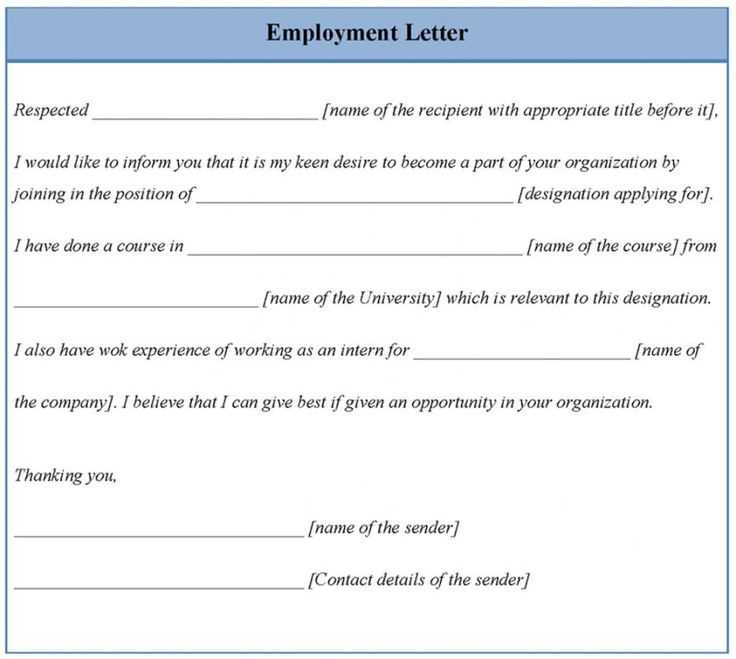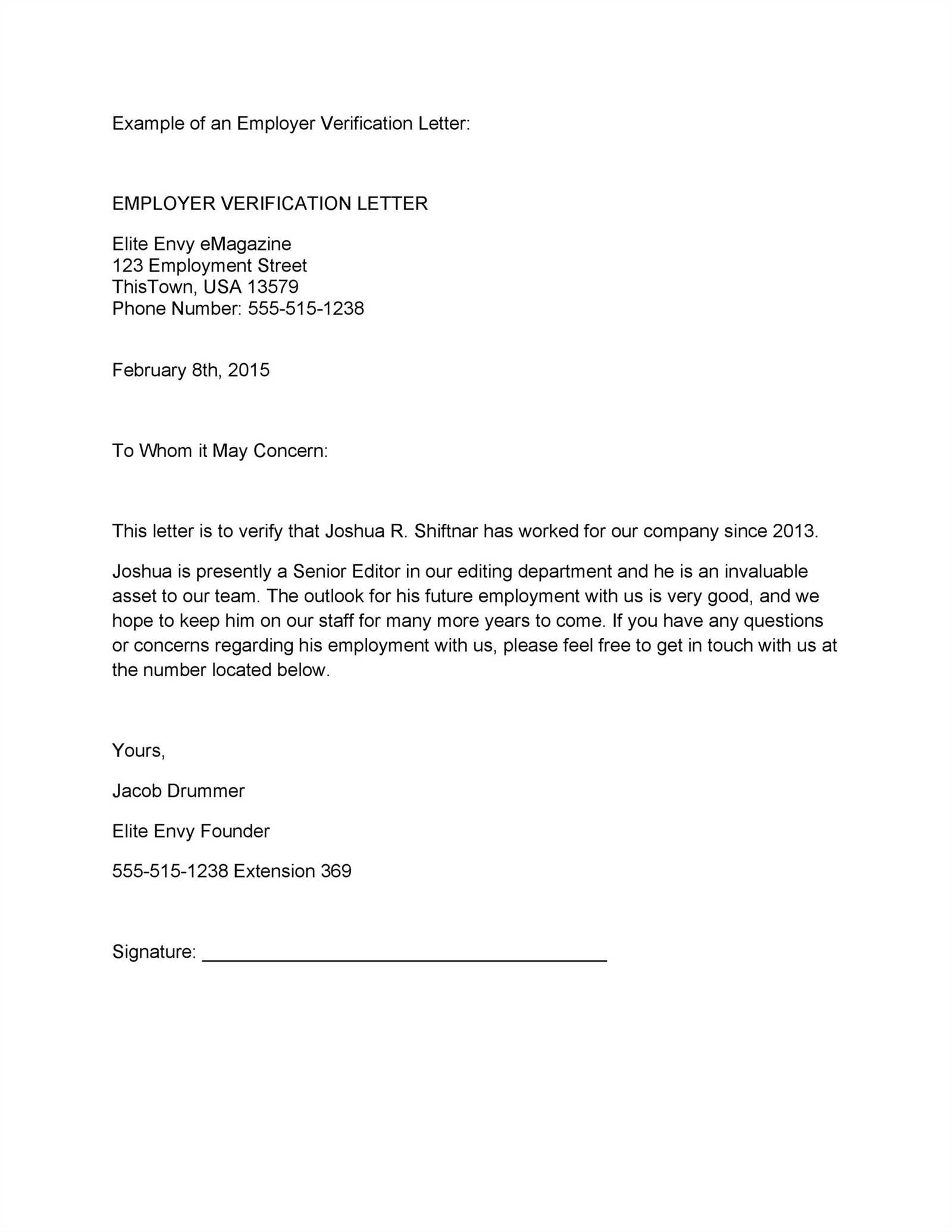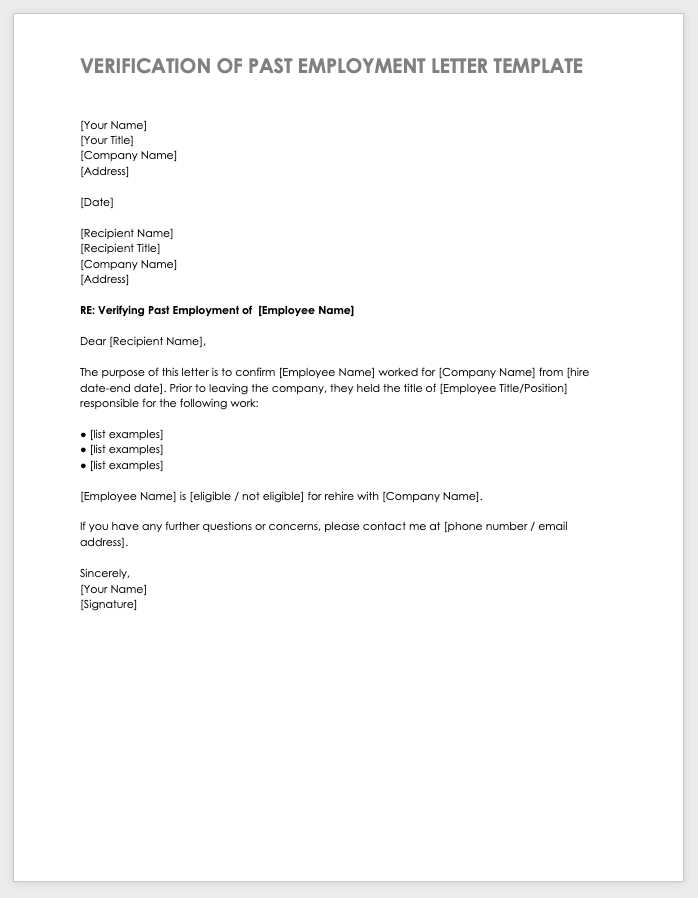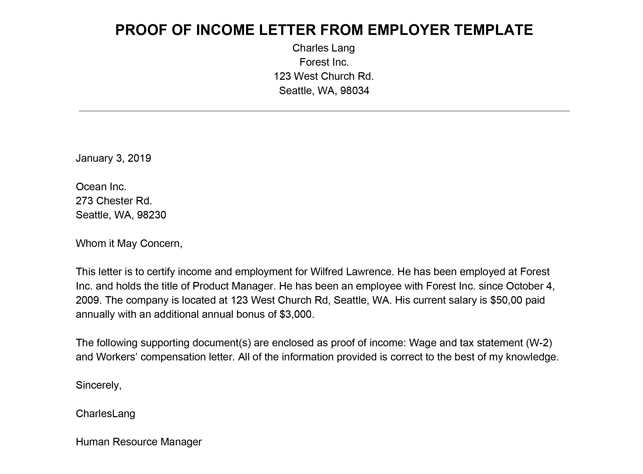Employment Verification Letter Template Guide

When creating a document to confirm someone’s job status or work history, it’s essential to include all necessary details clearly. This written proof serves as an official record that can be presented to employers, institutions, or other entities for various purposes. Knowing how to craft this type of document can ensure its effectiveness and acceptance.
Key Information to Include
To ensure the document is comprehensive, it’s crucial to incorporate the following essential elements:
- Employee’s Full Name: Clearly state the name of the individual being verified.
- Position Held: Specify the job title or role the employee has been in.
- Dates of Employment: Mention the start and end dates of employment, or state if the individual is still employed.
- Company Information: Include the employer’s company name and contact details.
- Job Responsibilities: Briefly outline the key tasks and duties performed in the role.
How to Structure the Document

The layout should be professional and easy to follow. Begin with a formal greeting, then move into the body where each point is clearly outlined. Finish with a closing statement, expressing the readiness of the company to provide further details if needed.
Common Mistakes to Avoid

While crafting the document, watch out for these common errors:
- Leaving out critical information, such as dates or job titles.
- Using informal language or tone.
- Making spelling or grammatical mistakes that could affect the document’s credibility.
Practical Uses for This Document
Such a confirmation can be used in various situations, including applying for a loan, verifying employment for a new job, or validating work history for visa purposes. By ensuring the document is clear and accurate, it can serve as an effective tool in professional settings.
Guide to Crafting a Professional Job Confirmation Document

Creating a formal document that verifies someone’s role or history within a company is essential in various professional scenarios. This document acts as an official confirmation, providing the necessary details to prove an individual’s employment status and job history.
Understanding the Purpose of Confirmation Documents
These documents serve to confirm specific details about an individual’s work experience, typically requested by institutions, agencies, or potential employers. They verify the authenticity of someone’s claims regarding their job role, time spent in the position, and other relevant employment details.
Key Information to Include
To ensure the document is complete, include the employee’s full name, the position held, the dates of employment, company details, and a brief description of the key duties. This information is vital for anyone relying on the document to assess the individual’s work history.
Step-by-Step Process for Creating a Template
Start with the company’s header and contact information, followed by a formal salutation. Proceed to clearly state the employee’s details, including their role, employment dates, and responsibilities. Finish with a statement of availability for further questions, signed by a representative from the organization.
How to Customize the Document for Specific Purposes
When tailoring this document, consider the intended use. If it’s for loan approval, emphasize the individual’s income and employment stability. For a new job application, focus on the individual’s skills and achievements in their role.
Common Mistakes to Avoid
Avoid leaving out essential details, such as the correct dates or job title. Ensure the language remains formal and professional throughout, as informal phrasing could diminish the document’s credibility. Also, double-check for any spelling or grammatical errors that may impact its accuracy.
When and Why to Use a Confirmation Document
Such a document is used when verification of an individual’s work history is required. It’s commonly needed for job applications, visa processing, or financial transactions. Having an accurate and well-crafted document can facilitate smoother interactions in these scenarios.